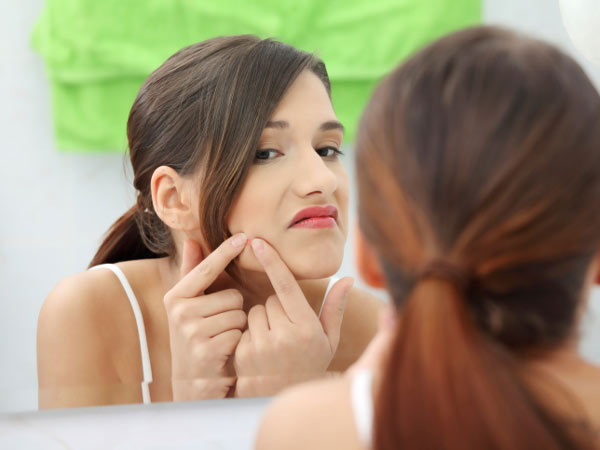Acne is not rare – actually it’s one of the most common skin diseases today and affects approximately 75% of youth and young adults at one point or another. Acne Vulgaris involves the inflammation of the base of hair follicles due to the overproduction of sebum in the oil glands of the skin. The visible symptoms include all different types of pimples and cysts like whiteheads, blackheads, and nobules on the surface of the skin; usually that of the face though it can develop elsewhere. Acne can also leave discoloration and scars in the long run and therefore treatment and proper care of affected skin is very important.

Causes of Acne
There are many reasons for the development of acne, but the primary culprit is the rise of androgen levels during puberty which explains the common onset during this physiological phase. There are other exacerbating factors such as being in hot and humid climates, excessive sweating, touching the skin with dirty hands or squeezing pimples. There are situations which affect our hormones which in turn influence the condition of our acne, such as high levels of stress, anxiety and the menstrual cycle.
Treatment of Acne
There are many different treatments for acne available on the market, all depending on the cause of acne in the first place as well as its severity. They range from over-the-counter face washes and creams to oral antibiotics, treatments, as well as injections.
Over the Counter Treatment:
Most mild cases of acne can be managed with creams, scrubs, and washes which can be found at the pharmacy or drugstore and can be purchased without a prescription from a doctor. They usually contain a low dosage of one of the following active ingredients: salicylic acid, benzoyl peroxide, retin-A, resorcinol, or azelaic acid. The first two, salicylic acid and benzoyl peroxide are by far the most common found in drugstore acne products and come at different strengths ranging from 0.5% to 5%. It is commonly advised to start with the lower dosages and increase as needed and as far as there are no adverse reactions. Choose products that complement your lifestyle and skin type, selecting from creams, lotions, gels, scrubs, exfoliating pads.
Oral Antibiotics:
Those suffering from very severe acne might be prescribed oral antibiotics by their dermatologist or doctor. This medication fights the bacteria that causes acne and is started off at a high dosage. Though it is seen as an effective method of treating acne, it is usually reserved for severe cases as it can come with a range of side effects. Additionally, the bacteria can become resistant to the antibiotic prescribed meaning that it loses effectiveness over time. This oral treatment should not be confused with oral contraceptives which are often prescribed to clear acne. However, it’s a good idea to check with your gynecologist first before starting on this medication.
Topical Treatments:
A dermatologist can also prescribe a topical cream to apply to the affected area directly to fight the acne-causing bacteria. Another direct treatment is retinoid cream which has been shown to be very effective in treating whiteheads and keep further pimples from developing.
Intense Pulse Light Therapy
Intense Pulse Light is one of the safest acne skin care treatments as the patient isn’t exposed to a range of side effects like oral or topical treatments do. It doesn’t alter the natural hormonal cycle of the individual or come with the implications associated with prolonged use of antibiotics. Ask your dermatologist for a referral to a trusted clinic performing this effective therapy technique.
Before you proceed with any of these treatments for your acne, it is imperative that you get the opinion of your doctor or dermatologist. He or she will be able to guide your acne therapy and lead you towards blemish-free, clear skin.